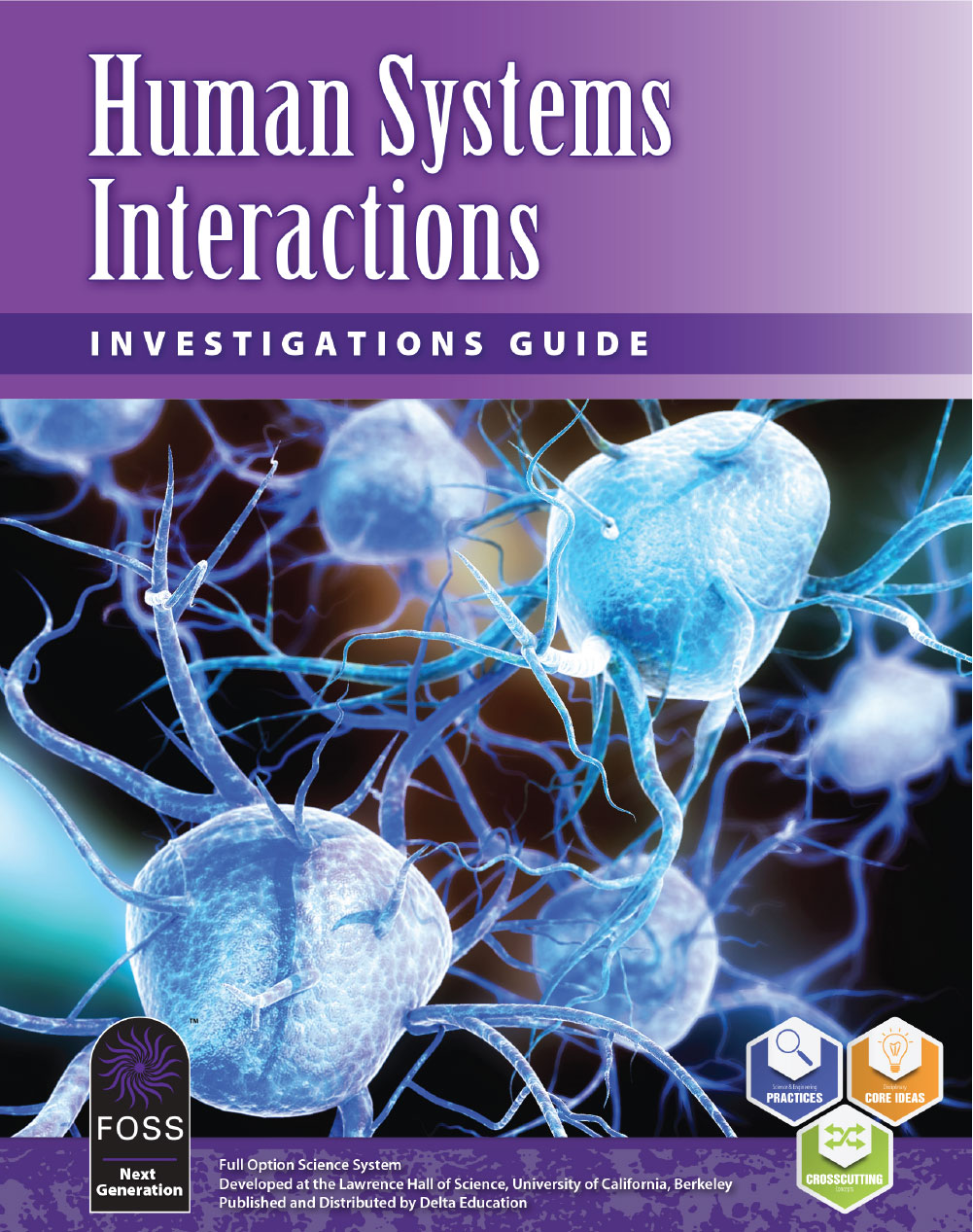FOSS Next Generation Human Systems Interactions
Grades 6-8

In the Human Systems Interactions course, students tackle big questions about body systems and the environmental factors that affect them. What happen when the body is attacked by an invader or an organ system malfunctions? How do cells get the resources they need to live? How do cells gain access to the energy stored in energy-rich compounds? How do systems support the human organism as it senses and interacts with the environment?
Investigation 1: Systems Connections
Students solve a disease mystery. On the path to diagnosis, students discover the structural levels in human bodies: that cells form tissues, tissues form organs, organs form organ systems, and systems form a complex multicellular organism, the human. They look for evidence of how the organ systems interact, each dependent on all the others for its needs.
Investigation 2: Supporting Cells
Students tire their muscles and think about how their cells obtain the food and oxygen they need from the digestive, respiratory, and circulatory systems. They learn how aerobic cellular respiration works in cells. They find out that the cells eliminate wastes produced during aerobic cellular respiration via circulatory, respiratory, and excretory systems.
Investigation 3: The Nervous System
Students explore the different senses to understand how humans acquire information from the environment. They engage in a “neuron relay” to model how sensory information travels to the brain for processing and how information returns to the body for action. Students turn their attention to their own learning and memory formation.